
A Mapplet is a reusable object containing a set of transformations that you can use in multiple mappings. Use a Mapplet in a mapping. Or, validate the Mapplet as a rule. Transformations in a Mapplet can be reusable or non-reusable.
- Mapplet Overview
- Creating a Mapplet
- What are the features of Mapplets?
- Mapplet Types
- Mapplet Input and Output
- Generated Mapplets
- How to Generating a Mapplet
- Rule Specification Properties
- What are the limitations of Mapplets?
- Conclusion
- A Mapplet is a reusable object that contains a set of modifications that you can use on multiple maps. Use a Mapplet on the map. Or, verify the Mapplet as a rule.
- Changes to the Mapplet can be reused or reusable. If you add a Sequential Generator variant to the Mapplet, it should be reused.
- When you use a Mapplet on a map, you are using a Mapplet example. Any changes made to the Mapplet benefit from all conditions of the Mapplet.
- Mapplets may contain other Mapplets. You can also use the Mapplet more than once on a map or map. You cannot have a round nest of Mapplets. For example, if Mapplet A contains Mapplet B, Mapplet B cannot contain Mapplet A.
- You can create a Mapplet manually. You can also produce a Mapplet in the inner part of the map or Mapplet.
Mapplet Overview:
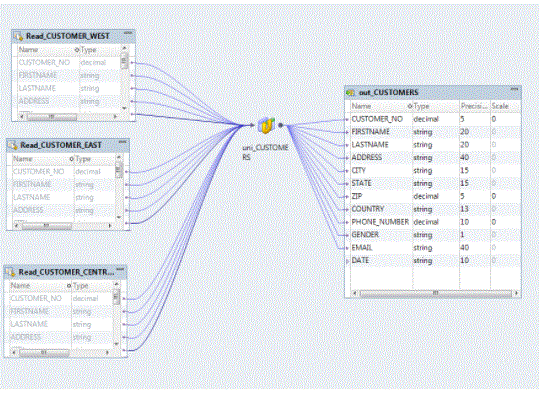
- Create a Mapplet to describe a reusable item that contains a conversion set that you can use on multiple maps.
- Select a project or folder in the Object Explorer view.
- Click File Mapplet.
- Enter the name of the Mapplet.
- Click Finish.
- Empty Mapplet from editor.
- Add mapple input, output, and transitions.
- You can verify the Mapplet before you add it to the map. You can also confirm the Mapplet you will use as a rule in the profile.
- Verify the Mapplet before adding the Mapplet to the map. You can also verify the Mapplet as a rule to be added to the profile.
- Right-click the Mapplet editor.
- Select Confirm As applet or Confirm As Rule.
- Verification Log indicates any errors that appear.
Creating a Mapplet:
Mapplet Verification
What are the features of Mapplets?
A Mapplet can define source descriptions of key data and qualification source to provide mapping data. Mapplet cannot have data source descriptions. Mapplet can receive that data again from the mapping process using Mapplet input holes.The Mapplet can have many changes.
Data can be converted into multiple pipelines. A Mapplet can contain multiple groups of holes / groups that can be linked to each other through separate pipelines on a map.
Mapplet Types:
The type of Mapplet is determined by the input and output of the Mapplet. You can create or produce the following types of Mapplet:
Source. Mapple contains data source as input and Output output as output.
Target. Mapplet contains Input input as installed and data source as output.
Midstream. Mapplet contains Input conversion and Output conversion. It has no data entry or output data.
- You can build multiple pipes on a Mapplet. Use multiple data sources or input modifications. You can also use a combination of data sources and input modifications.
- Use one or more data sources to assign source data to the Mapplet. When you use a Mapplet on a map, it is first in the map line and does not contain input holes.
- Use the input modification to get input from the map. Input conversion provides input holes so you can transfer data to the Mapplet. Each hole in the Input switch connected to the other switch in the mapple becomes the input hole of the Mapplet. Input conversion can get data from one active source. Offline holes do not appear in the map editor.
- You can link input conversions to multiple conversions on the Mapplet. You can also connect a single hole in the input switch to multiple converters in the Mapplet.
- Use data source as output if you want to create a targeted Mapplet. Use effect modification on Mapplet to transfer data from Mapplet into map.
- Use one or more data sources to provide targeted data to the Mapplet. When you use a Mapplet on a map, it is the last one on the map line and does not contain exit holes.
- Use Exit Conversion to transfer output to the river or orientation on the map. Each hole connected to the output switch appears as a mapple output hole in the map.
- Each Exit modification of the Mapplet appears as an output group. The output team can transfer data to multiple pipelines on the map.
Mapplet Input and Output:
In order to use the Mapplet on the map, you must configure input and output. The Mapplet has the following input and output:
Mapplet Input. You can transfer data to Mapplets from data sources or input modifications or both. If you verify the Mapplet as a rule, you should transfer the data to the Mapplet by input Input. If you are using input modification, connecting to a source or an upgrade on the map.
Mapplet output. You can transfer data to Mapplets from data sources or result modification or both. If you verify the Mapplet as a rule, you should transfer the data from the Mapplet with the Output switch. If you use Exit modification, targeted link or down-to-map transition.
Mapplet ports. You can see mapple holes in the map editor. Mapplet input ports and output ports are derived from input conversion and outbound conversion. They do not come from data sources.
Mapplet input can be from a data source or input input.
Mapplet Output
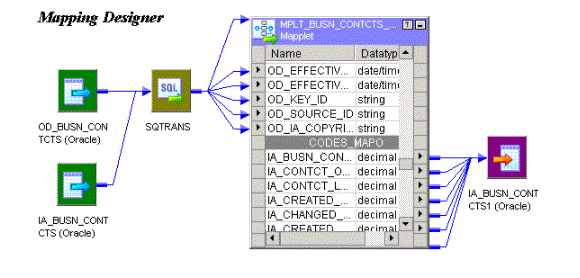
- Mapplet production fails if any of the following conditions are true:
- Selected changes do not follow.
- The section contains both literacy and numeracy conversions. However, the component may include multiple readings or multiple writing transitions.
- The component includes non-sequential Product Sequence Modifications, input modifications, output modifications, or modifications that contain set functions.
- The selected section does not include all changes in the pipeline branch.
- The first and last changes in the category contain variable fields.
- The section includes incoming working time links to the first version or outgoing working links from the last version.
- The section contains a single version with the Read, Write, or View parameter.
Generated Mapplets:
you can make a Mapplet part of the map or Mapplet. you may want to create a Mapplet if the map or Mapplet contains a connected flow stream that you want to reuse. The engineer tool validates the part as a Mapplet as part of the production process. review the rules and guidelines for manufactured Mapplets to avoid verification errors.
Product Mapplet Rules and Guidelines.
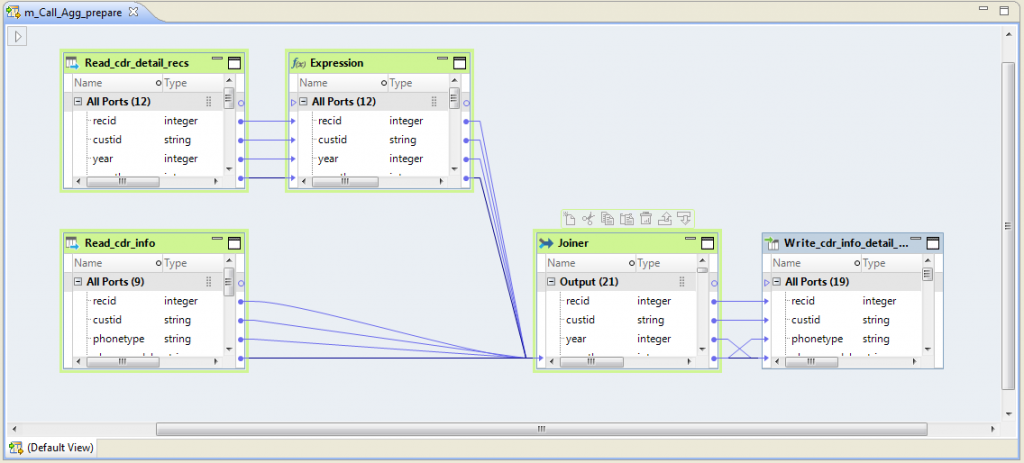
- Open a map or Mapplet containing the half you would like to maple.
- Select the changes to use to the Mapplet.
- Right-click on one of all the chosen changes, and choose the takeaway Mapplet.
- The production method verifies the half and reports any verification errors.
- Browse the placement of the Mapplets you would like to create the Mapplet.
- The Developer Tool generates a Mapplet within the Mapplets space among the present project mechanically.
- Click end.
How to Generating a Mapplet:
Generate a Mapplet from an element that contains connected changes. The section could contain scan, Write, or intermediate changes.Mapplet replaces selected changes to real map or Mapplet. The tool adds Input or Output to the Mapplet supporting whether or not the element contains the scan, Write, or middle transition. Note that you simply should clearly save the changed map or Mapplet so as to exchange the chosen changes with the Mapplet. To revive a map or mapple defaults, choose File> Undo 3 times.
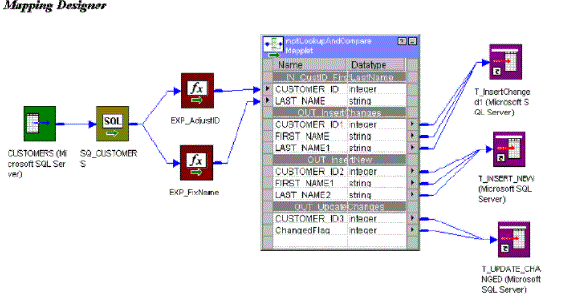
- Typical structures contain the name and meaning of an example of a legal definition.
- When you update a legal name or description on a map, the changes you make apply to the current map only.
Rule Specification Properties:
Legal specifications have features that you can view and edit in a developer tool. Use properties to update descriptive metadata for legal terminology. You can also use the features to determine the number of output ports produced by the law code for cross-river objects.
To view the properties, open the map containing the legal specifications and select the legal specification icon. Then, select the Properties tab on the map. The tab shows the following views:
Normal
Properties
Properties include the legal definition name that appears in General View. Features also specify any date range the user of the Analysis tool has not set a rule. Date range indicates the period within which the rule of law is allowed to apply.
You can select or delete an option to allow the output to each child rule in a specific rule. A child law is a law enshrined in the rule of law. If you select an option, the Developer tool adds an output hole to each rule set in the specified program map. The option is clear by default. Select the option to make the rule set out in the items below the map.
Ports
The hole features line the input and output holes in the example of the rule specification. The hole properties display the name, data type, accuracy, and scale of each hole. You can choose to add a description to the hole. The definition applies to the hole in the context of the definition of the current law.
Working time link
Operating time features determine now law enforcement holes connect to other items on a flexible map.
Advanced
Improved features include tracking level setting. The tracking level specifies the amount of information from the log to specify the rule. You can choose short, regular, verbal launches, or verbose data. Default value is normal.
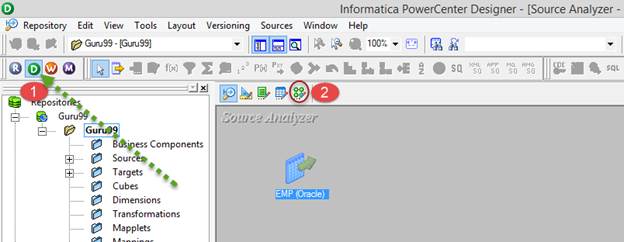
- You can not connect one Input hole to multiple conversions.
- Input conversion ought to solely get knowledge from one active user.
- Depending on the qualifications – the set of rules outlined within the supply knowledge to extract knowledge, Mapplet output ports use the pipeline methodology for one qualification within the supply knowledge or the Joint methodology for over one qualification.
- PowerMate 3.5 operation vogue functions aren’t supported on Mapplet. If Mapplets is switched from passive to active, the map delineated within the knowledge is invalid.
What are the limitations of Mapplets?
Conclusion:
A Mapplet can define source descriptions of key data and qualification source to provide mapping data. Mapplet can receive that data again from the mapping process using Mapplet input holes. The Mapplet can have many changes. Data can be converted into multiple pipelines.
Mapping is in Informatica with the help of which you can explain how source data is processed before it reaches a destination or target object. Maps help us define the conversion of data at the levels of each column in each row





